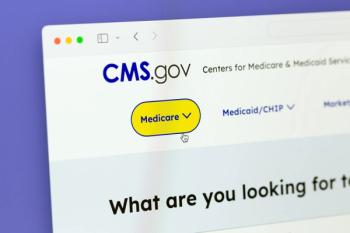
A Conversation With Steven Buslovich, M.D., CMD, MS, CMO of Senior Care at PointClickCare
In this interview, Steven Buslovich, M.D., CMD, MS, CMO of Senior Care at PointClickCare describes AI’s role in care transitions within healthcare systems and how AI can reduce readmission rates.
AI is a powerful tool that can be used in health system settings to summarize patient data, improve information transfer and predict readmission risk, according to Steven Buslovich, M.D., CMD, MS, CMO of Senior Care at PointClickCare.
PointClickCare is an AI-driven, cloud-based electronic healthcare record platform for senior care providers, including skilled nursing facilities, assisted living communities and continuing care retirement communities.
This interview has been edited for length and clarity.
MHE: What role does AI play in care transitions within health systems? Do you have specific examples of implementation and results?
Buslovich: AI has a growing place in healthcare, particularly around transitions of care.
The weakest link in the healthcare ecosystem is usually when an individual patient transitions from one care setting to another.
We often struggle with different data sources and when the patient transitions, there's a good chance they will be managed in a different data set or different set of technology tools. That is where errors occur. That's where communication gaps exist, and we need to employ AI technologies to help those caregivers summarize information in a cohesive way.
There often is too much information, for example, sent from a hospital to a post-acute care setting like a skilled nursing facility. They usually come in a thick envelope with 100 different pages of often conflicting information. AI can help us summarize that information in a way that allows us to improve intake and improve high-yield information transfer to the next care setting.
AI can also synthesize what's happening with the individual at the point of care.
What PointClickCare brings to the market is summarizing the full patient chart, based on their situation today, so we can understand how it may change. This is so we can know where to focus our clinical teams or resources, particularly if there's a new risk, but also to see what's around the corner.
MHE: How are health systems collaborating with managed care organizations to align AI-driven readmission reduction strategies?
Buslovich: When managed care organizations partner with health systems, practice groups or post-acute care partners, they identify opportunities to mitigate risk and reduce unnecessary healthcare expenditures. AI could enable those shared-risk partnerships by helping with data transparency.
As an organization taking a risk, I'd love to reduce the risk of readmission for an episode, particularly an episode within that episode. That could be a 30-day episode, a 90-day episode or I could be taking a risk for the full year. I need to track this patient as they go in and out of different care settings. Using AI to predict their risk of return to the hospital is important.
There are tools in the acute care setting and hospital setting that are used to predict readmission risk, but once a patient leaves that hospital, you need two different tool sets to predict how their condition or changing condition is impacting that risk score. AI can help combine different models in a way that tells a story of a patient, as opposed to a snapshot in time, which is where we were historically.
MHE: How can managed care organizations use AI to identify and address disparities and readmission rates?
Buslovich: AI helps us provide more equity across disenfranchised populations, what we often think of as an “unfavorable population” because of health disparities, food insecurity, social determinants of health issues and socioeconomic differences.
We are using technology to make the process a little bit more agnostic. Once you can look at an individual based on their holistic picture, it's a lot easier to control for that individual bias.
In Massachusetts we have implemented a program to help the state identify the behavioral health cohort, where patients often get stuck because the healthcare ecosystem isn't designed to support them. Ultimately, we can use technology to find placements within other health systems in the state that might be more appropriate for that behavioral health situation.
You're taking an underserved population, one with often many inequities, and really helping to connect the dots to get them to the right care setting where there may be resources available across the state.
MHE: What is the long-term role of AI in balancing cost, quality and capacity management for health systems and payers?
Buslovich: The long-term play is to optimize capacity and cost utilization by being able to have better data and make better decisions around interventions and care management approaches.
I think you can then more appropriately employ the underpinnings of cost, which are staffing, healthcare utilization, and interventions that may be sometimes more harmful than beneficial.
I think then you can connect those outcomes to value. Looking at AI to link it to clinical results and financial performance is the future.
We just need to find a way to do it in a manner that's not only scalable but also clinically beneficial to the individual, and we can't lose sight of the individual.
And then, you know, use AI to optimize how we optimize capacity for bed management, resource utilization and staffing.
In the long term, AI is going to make us much more deliberate with how we utilize resources and how we match patient needs with service capacity.
Newsletter
Get the latest industry news, event updates, and more from Managed healthcare Executive.




















































